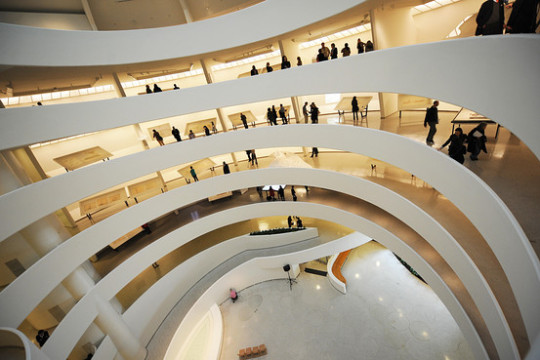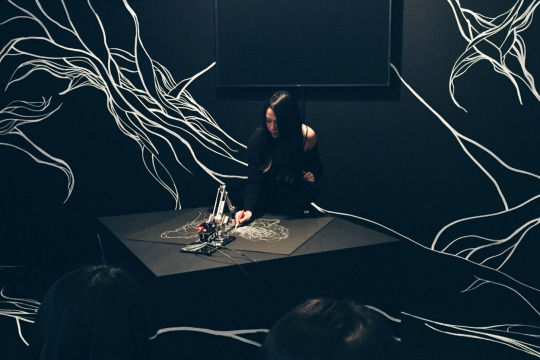This blog explores expanded notions of co-presence in contemporary art — including mediated relations with AI, interfaces, and aesthetic systems. Against marketised creativity and identity commodification, I gather artistic practices that open gentle, non-coercive spaces for fragile forms of selfhood to emerge. Informed by media theory and aesthetic philosophy, the posts reflect on how art can become a site for ethical encounter, ontological care, and alternative ways of being-with.
Don't wanna be here? Send us removal request.
Text

Artist: Tino Sehgal Artwork: This Progress Year: 2010 (Guggenheim Museum, New York)
Overview
Tino Sehgal is known for producing “constructed situations”: immaterial works composed entirely of human interactions. This Progress takes place within the spiralling interior of the Guggenheim Museum. As the audience walks up the ramp, they are engaged in an unfolding conversation with a series of interpreters—ranging in age from children to adults—each asking and responding to questions about “progress.”
There is no installation, no documentation, no visual object. The artwork is the encounter itself.
Critical Reflection
This work challenges the idea that interaction must be mediated by technology, spectacle, or infrastructure. It offers a bare, embodied co-presence—where meaning emerges through shifting roles of listener, speaker, child, adult, expert, and novice. The structure is tightly choreographed yet feels improvisational, blurring the lines between control and spontaneity.
For my research, This Progress is a key contrast to algorithm-driven “pseudo-participation.” It asks: what happens when participation isn’t programmed but lived? What kind of ethical relation is made possible when there are no screens, no interfaces, no data? The work enacts a model of ontological care through slowness, directness, and mutual attention—qualities often stripped away in AI-mediated exhibitions.
Sehgal’s refusal to record or commodify his work also raises questions of curatorial responsibility: how do we “archive” experiences that leave no trace but memory? And how might we value presence not as proof, but as process?
In an artist talk at Fondation Beyeler, Sehgal explained: “The work is not about a question; it is the question.” This quote highlights a radical shift in participatory aesthetics—from audience as recipients to audience as interlocutors. By refusing material documentation, Sehgal asks us to engage with the work as experience, not through representation. This process-centric ethics aligns with my interest in gentle aesthetics, where interaction is neither programmed nor extractive, but co-produced through temporal presence and mutual uncertainty.
youtube
0 notes
Text

Artist: Sougwen Chung Artwork: Drawing Operations Year: 2015–ongoing
Overview
Sougwen Chung is a Chinese-Canadian artist and former researcher-in-residence at MIT Media Lab and Bell Labs. Her long-running project Drawing Operations explores human–machine collaboration by treating AI not as a tool, but as a co-creative agent. Using motion capture and machine learning, Chung trains an AI model on her own drawing gestures. She then draws in real time alongside a robotic arm, which interprets and responds to her movements. The resulting works contain traces of both—intertwined yet distinct.
Critical Reflection
The most radical proposition of this work is its redefinition of AI as a co-present collaborator rather than a predictable system or spectacle. Chung does not foreground the AI’s capacity for technical precision or visual novelty. Instead, she embraces its limitations and unpredictability, allowing the machine to “fail,” to imitate imperfectly, and to learn through relation.
This model of interaction resonates strongly with the notion of ontological care. Rather than reducing interactivity to a set of pre-scripted outputs, Chung builds an interface of trust, transparency, and shared agency. The machine is not a proxy for her hand, but a differentiated presence—one that invites audiences to reconsider authorship, autonomy, and collaboration in computational art.

0 notes